Issue Archive
Table of Contents
EDITORIAL
Introduction to a How I Treat series on anemia
In this commissioned How I Treat series introduced by Associate Editor Mario Cazzola, experts review relevant pathophysiology and provide guidance regarding the treatment of patients with anemia in common general medical settings.
BLOOD COMMENTARIES
HOW I TREAT SERIES
Anemia
How I treat renal anemia
In this commissioned How I Treat series introduced by Associate Editor Mario Cazzola, experts review relevant pathophysiology and provide guidance regarding the treatment of patients with anemia in common general medical settings.
How I treat anemia in heart failure
In this commissioned How I Treat series introduced by Associate Editor Mario Cazzola, experts review relevant pathophysiology and provide guidance regarding the treatment of patients with anemia in common general medical settings.
How I treat cancer-associated anemia
In this commissioned How I Treat series introduced by Associate Editor Mario Cazzola, experts review relevant pathophysiology and provide guidance regarding the treatment of patients with anemia in common general medical settings.
How I treat anemia in the perisurgical setting
In this commissioned How I Treat series introduced by Associate Editor Mario Cazzola, experts review relevant pathophysiology and provide guidance regarding the treatment of patients with anemia in common general medical settings.
CLINICAL TRIALS AND OBSERVATIONS
Does time from diagnosis to treatment affect the prognosis of patients with newly diagnosed acute myeloid leukemia?
Clinical Trials & Observations
Röllig and colleagues used data from a large German registry to demonstrate that variation in time to commencement of induction therapy for acute myeloid leukemia is not associated with survival. This has important implications for assignment of clinically stable patients to genetic test–guided therapy in both standard and clinical trial settings.
HEMATOPOIESIS AND STEM CELLS
Multispecies RNA tomography reveals regulators of hematopoietic stem cell birth in the embryonic aorta
Using the new technology of RNA tomography to provide spatially resolved genome-wide transcriptomics at given time points in development across vertebrate species, Yvernogeau et al identified the molecular landscape of the hematopoietic stem cell (HSC) microenvironment in the embryonic aorta and identified evolutionarily conserved extrinsic regulators of HSC development. Zhu and colleagues used single-cell analyses and multiomics to investigate how hemogenic endothelial cells in the embryo become precursors of hematopoietic stem cells, defining a Runx1-regulated bottleneck and 2 waves of CD45+ cells.
Developmental trajectory of prehematopoietic stem cell formation from endothelium
Using the new technology of RNA tomography to provide spatially resolved genome-wide transcriptomics at given time points in development across vertebrate species, Yvernogeau et al identified the molecular landscape of the hematopoietic stem cell (HSC) microenvironment in the embryonic aorta and identified evolutionarily conserved extrinsic regulators of HSC development. Zhu and colleagues used single-cell analyses and multiomics to investigate how hemogenic endothelial cells in the embryo become precursors of hematopoietic stem cells, defining a Runx1-regulated bottleneck and 2 waves of CD45+ cells.
IMMUNOBIOLOGY AND IMMUNOTHERAPY
Cereblon harnesses Myc-dependent bioenergetics and activity of CD8+ T lymphocytes
LYMPHOID NEOPLASIA
Targeting aberrant DNA hypermethylation as a driver of ATL leukemogenesis by using the new oral demethylating agent OR-2100
Watanabe and colleagues identify that cumulative methylation of DNA at sites differentially determined by human T-cell leukemia virus 1 infection is correlated with the development and progression of adult T-cell leukemia-lymphoma (ATL). Consistent with this being functionally important, they demonstrate potent activity of hypomethylating agents in patient- and cell line–derived xenografts.
MYELOID NEOPLASIA
Treg sensitivity to FasL and relative IL-2 deprivation drive idiopathic aplastic anemia immune dysfunction
Deficiencies in regulatory T cells (Tregs) are a pathogenic feature of idiopathic aplastic anemia (AA). Lim et al reveal two mechanisms leading to skewed Treg composition in AA and provide an example of how this new knowledge could be used for therapeutic gain.
THROMBOSIS AND HEMOSTASIS
A cell-based high-throughput screen identifies drugs that cause bleeding disorders by off-targeting the vitamin K cycle
Chen et al made use of a cell-based screening system and an in vivo bleeding model to identify drugs that can perturb the vitamin K–dependent carboxylation machinery in a clinically impactful manner. Bleeding caused by drugs inhibiting the reduction of vitamin K epoxide but not vitamin K can be rescued by vitamin K administration.
LETTER TO BLOOD
Phase 1 study of lenzilumab, a recombinant anti–human GM-CSF antibody, for chronic myelomonocytic leukemia
Clinical Trials & Observations
In this phase 1 trial, inhibition of granulocyte-macrophage colony-stimulating factor (GM-CSF) was associated with clinically meaningful responses in 5 of 15 patients with relapsed or refractory chronic myelomonocytic leukemia (CMML). Preliminary data suggest that this approach may be tractable in CMML bearing activating NRAS mutations.
BLOOD WORK
-
Cover Image
Cover Image
![issue cover]()
Transversal section of a zebrafish embryo (40 hours postfertilization) after in situ hybridization for podxl. A spatial transcriptomic approach identified PODXL as a highly conserved gene expressed around the aorta when hematopoietic stem cell emergence occurs in zebrafish, chicken, mouse, and human embryos. See the article by Yvernogeau et al on page 831.
Publisher’s note: On the cover of the print edition, the image is shown with the yolk sac at the top, rotated 180° from the conventional orientation. The orientation has been corrected in the online edition. The publisher apologizes for the error.
- PDF Icon Front MatterFront Matter
- PDF Icon Table of ContentsTable of Contents
- PDF Icon Back MatterBack Matter
- PDF Icon Editorial BoardEditorial Board
Advertisement intended for health care professionals
Email alerts
Advertisement intended for health care professionals





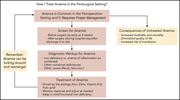

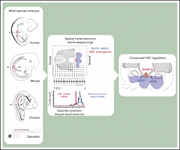


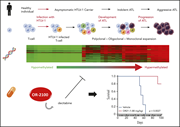
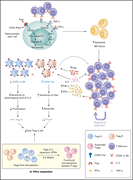
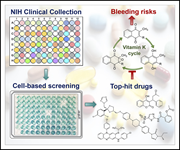

Decoding hematopoietic stem cells’ birth